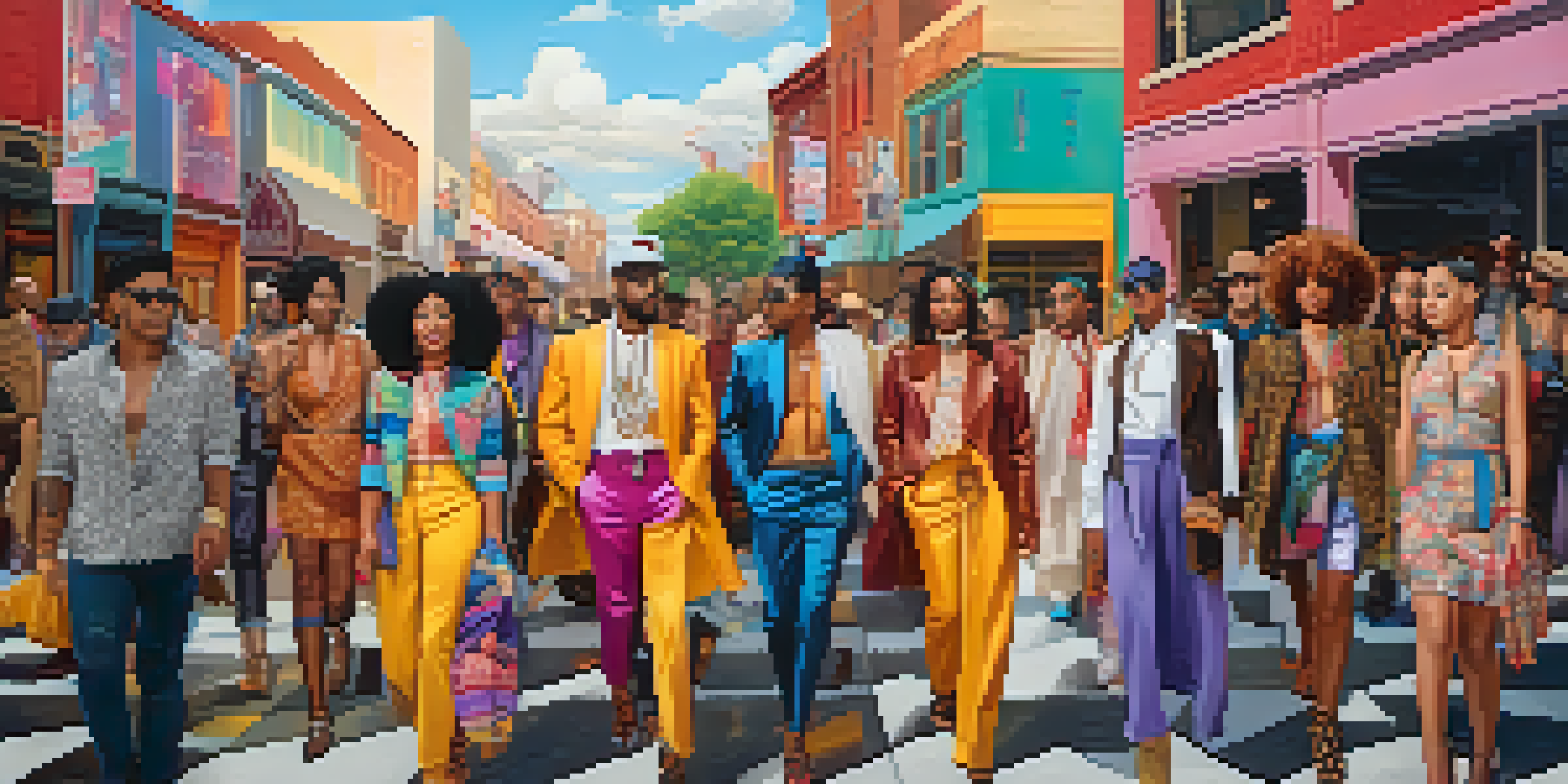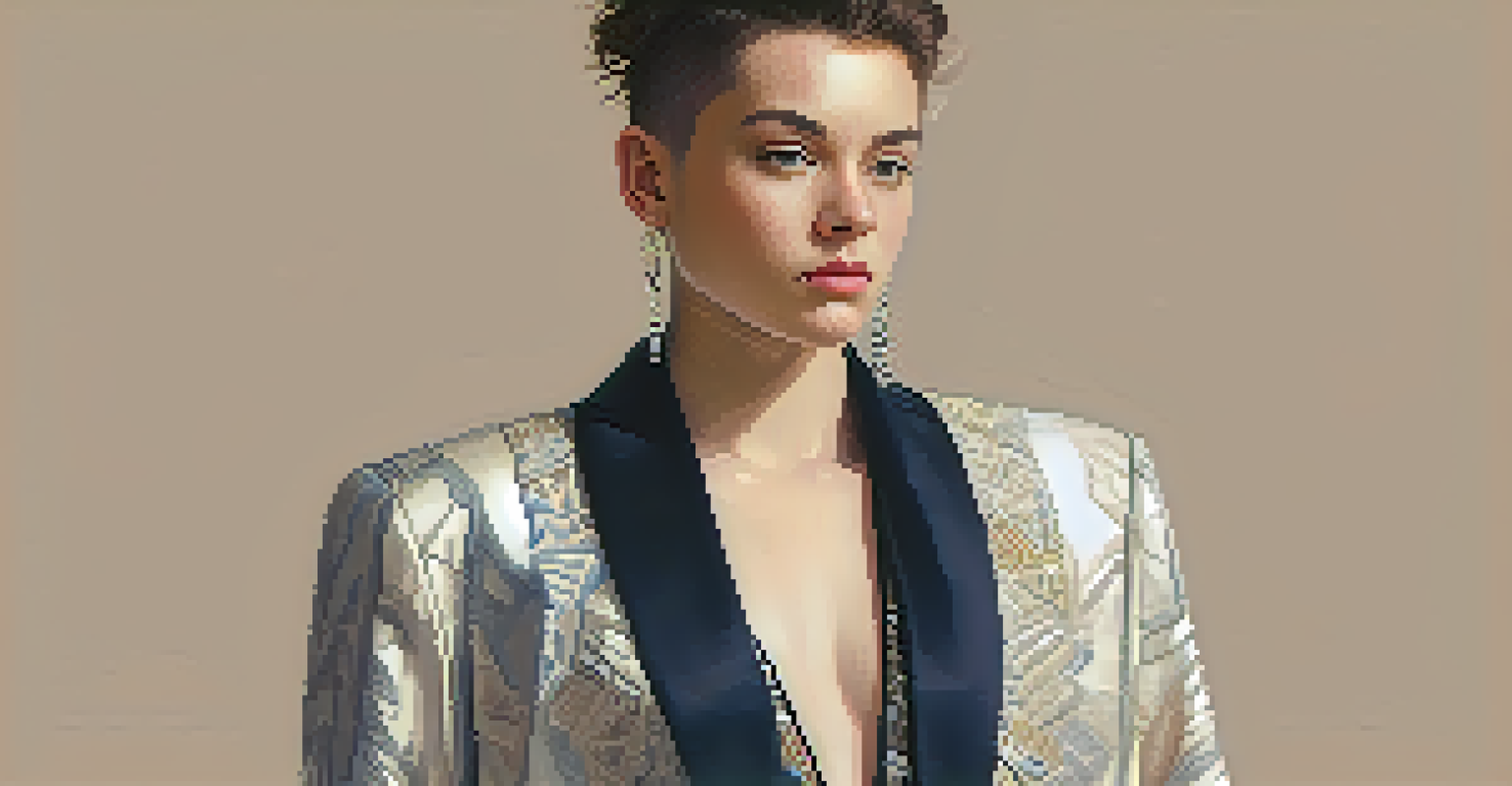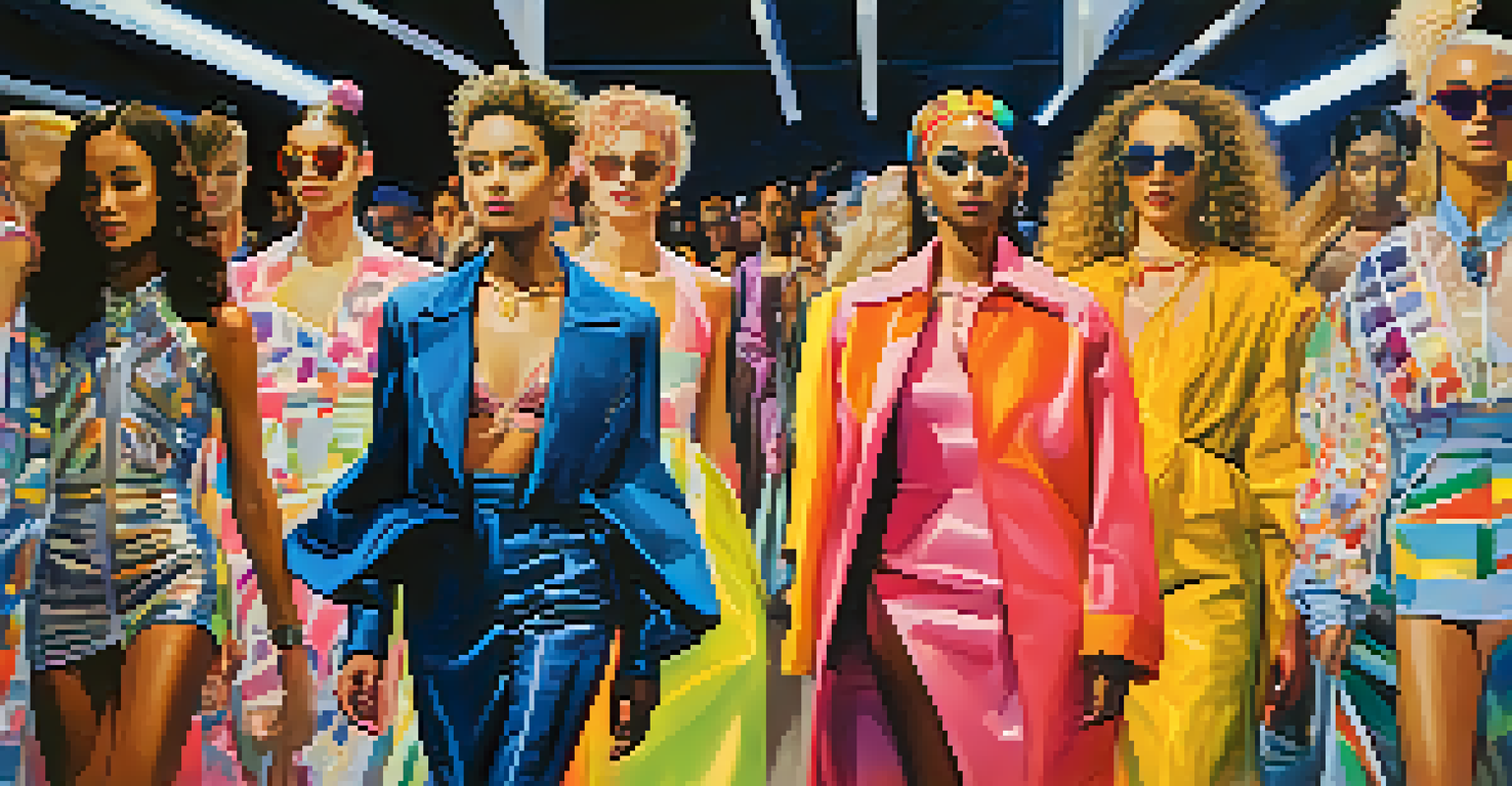The Role of Fashion in Shaping Gender Identity and Expression

Understanding Gender Identity in Fashion Context
Gender identity is how individuals perceive themselves and what they call themselves. In the context of fashion, it often intersects with the clothing choices we make. For instance, a person may identify as non-binary and choose clothing that reflects a mix of traditionally masculine and feminine styles.
Fashion is the armor to survive the reality of everyday life.
Fashion serves as a canvas for expressing one's gender identity, allowing people to break away from societal norms. This expression can challenge the binary view of gender, paving the way for broader acceptance of diverse identities. Think of it as a language where every outfit tells a story about who we are.
Ultimately, understanding gender identity through the lens of fashion encourages a more inclusive society. It reminds us that clothing is not merely about aesthetics; it's a vital form of self-expression that can affirm or challenge our understanding of gender.
The Historical Context of Fashion and Gender Roles
Historically, fashion has been both a reflection and a reinforcement of gender roles. In the past, strict dress codes dictated how men and women should present themselves, often limiting personal expression. For example, women were expected to wear skirts and dresses, while men donned suits, creating a rigid framework of gender expectations.

However, the evolution of fashion has seen these norms challenged and reshaped. Movements like the women’s liberation and LGBTQ+ rights have significantly influenced how clothing is perceived across genders. This shift highlights how fashion can be a tool for resistance and change, allowing individuals to reject outdated norms.
Fashion as Gender Identity Expression
Fashion allows individuals to express their gender identity through clothing choices that reflect their personal styles.
The ongoing dialogue between fashion and gender roles continues to evolve, encouraging new interpretations of what it means to dress according to one's identity. As society progresses, so too does the understanding that fashion can empower rather than constrain.
Fashion as a Medium for Gender Expression
Fashion allows individuals to express their gender in ways that resonate with their identities. From bold patterns to unique accessories, clothing can communicate messages about who we are without uttering a word. For example, a brightly colored outfit might express confidence and individuality, while a more subdued style could reflect comfort and introspection.
Clothes mean nothing until someone lives in them.
This ability to express oneself through fashion can be particularly liberating for those who feel marginalized by conventional gender norms. By choosing garments that align with their identities, individuals create a space where they feel safe and authentic. It’s akin to finding a voice after years of silence.
Thus, fashion becomes a celebration of diversity, allowing everyone to find their unique style. Whether one opts for gender-neutral clothing or embraces traditional gendered attire, self-expression through fashion plays a crucial role in affirming identity.
The Influence of Pop Culture on Gender and Fashion
Pop culture significantly shapes our perceptions of gender and fashion, often setting trends that challenge traditional norms. Celebrities and influencers wield immense power, showcasing styles that blur gender lines. For instance, stars like Billy Porter and Harry Styles have embraced fashion that defies conventional gender expectations, inspiring fans to do the same.
This influence not only affects personal style choices but also fosters broader societal acceptance of diverse gender expressions. As these figures take bold fashion risks, they challenge the status quo and encourage others to explore their identities without fear of judgment. It’s a ripple effect that can transform entire communities.
Pop Culture's Role in Gender Norms
Celebrities and influencers in pop culture challenge traditional gender norms, inspiring broader acceptance of diverse gender expressions.
By embracing various styles, pop culture illustrates that fashion is not just about clothing; it's a form of rebellion and self-acceptance. It empowers individuals to explore their gender identities creatively and confidently.
The Role of Fashion in Gender Inclusivity
Fashion plays a vital role in promoting gender inclusivity by challenging the binary classification of clothing. Many designers now offer collections that cater to a spectrum of gender identities, ensuring that everyone can find styles that resonate with them. This shift reflects a growing understanding that fashion should be accessible to all, regardless of gender.
Inclusivity in fashion is not just about offering a wider range of sizes or styles; it’s about creating a culture that celebrates diversity. When fashion brands embrace inclusivity, they not only appeal to a broader audience but also foster a sense of belonging among individuals who may have felt excluded. This approach can transform the shopping experience into one of empowerment.
Ultimately, fashion’s role in gender inclusivity highlights the importance of representation in the industry. When individuals see themselves reflected in fashion, it validates their identity and encourages them to express themselves freely.
The Impact of Social Media on Fashion and Gender Identity
Social media has revolutionized the way we engage with fashion and gender identity. Platforms like Instagram and TikTok allow individuals to showcase their unique styles and share their journeys towards self-acceptance. This visibility provides a sense of community for those exploring their gender identity, offering support and inspiration.
Moreover, social media challenges traditional fashion marketing, allowing for a more diverse representation of gender. Influencers from various backgrounds promote styles that resonate with their identities, demonstrating that fashion is not confined to a specific mold. It’s a refreshing reminder that individuality is what makes fashion truly beautiful.
Inclusivity in Fashion Design
The fashion industry is increasingly embracing inclusivity by offering diverse styles that cater to a spectrum of gender identities.
As users curate their feeds with inclusive content, they contribute to a broader culture that embraces diversity in gender expression. This dynamic interaction between social media and fashion empowers people to confidently explore and express their identities.
The Future of Fashion and Gender Expression
Looking ahead, the future of fashion and gender expression appears promising, with a growing emphasis on inclusivity and individuality. As society becomes more accepting of diverse identities, fashion brands are increasingly recognizing the importance of creating collections that reflect this shift. We can expect to see more gender-neutral clothing lines and innovative designs that challenge conventional norms.
This evolution is not just about aesthetics; it's about fostering a culture where everyone feels seen and valued. As more individuals embrace their authentic selves, fashion will become a vital tool for self-expression and identity affirmation. It’s about creating a world where clothing transcends gender barriers and allows for complete freedom of expression.

Ultimately, the future of fashion holds the potential to redefine the very essence of gender identity. By prioritizing inclusivity and creativity, the fashion industry can lead the way toward a more accepting and diverse society.